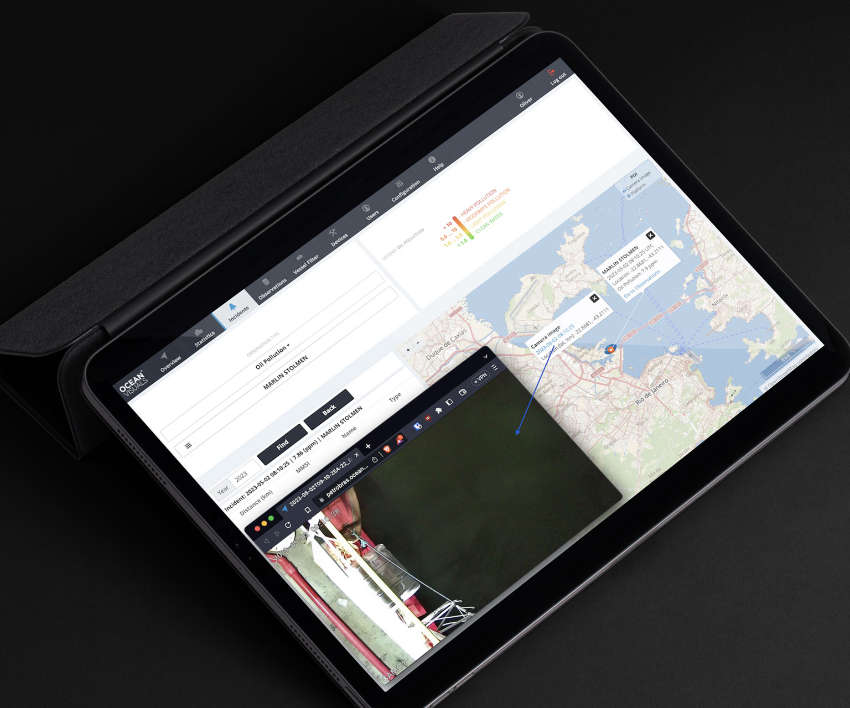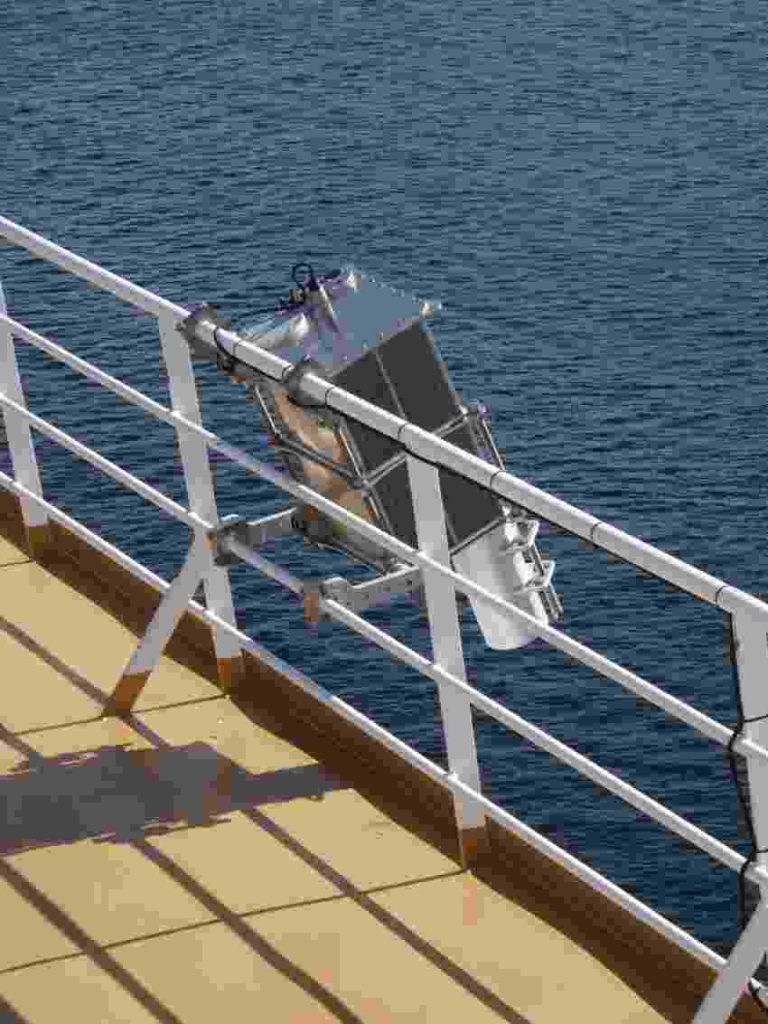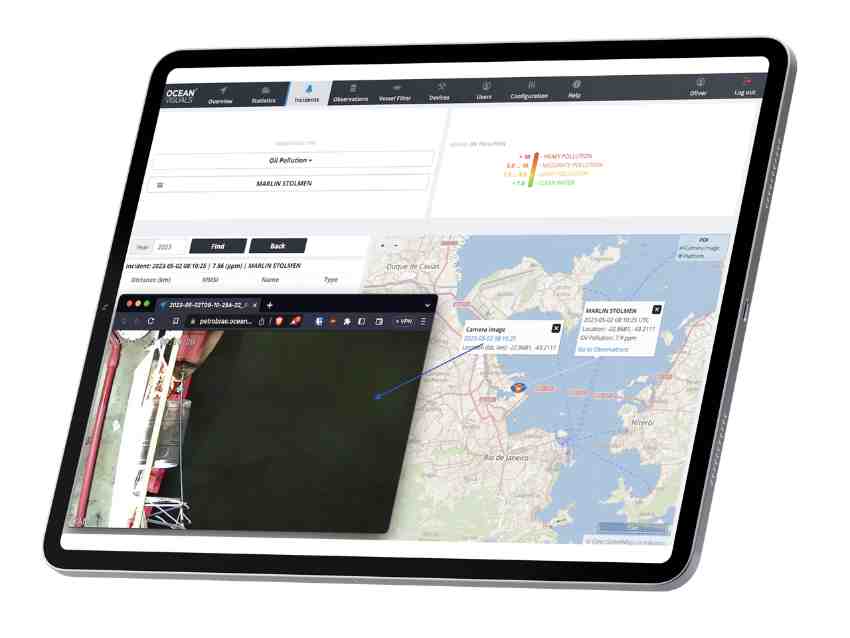Ocean Visuals is a Norwegian company specializing in environmental monitoring technologies, and proud recipients of the European Innovation Council Accelerator Grants, blended finance.
Interview with Christian Testman, CEO of Ocean Visuals.
A brief description of the company and its activities.
Christian Testman: Our flagship product, the patented Hyper-Spectral Laser-Induced Fluorescence (HLIF) OWL™ lidar sensor system, offers real-time detection and classification of oil types and organic substances in marine environments. Using advanced photonics, our sensors provide immediate, high-precision data collection from the air, surface, and subsea. We go beyond detection, by contextualizing data to extract actionable insights, which can be further enhanced through machine learning, data fusion, and predictive modeling for oil-in-water scenarios.
What are the main areas of activity of the company?
C.T: Environmental Monitoring & Protection: Our HILF OWL™ lidar technology helps industries and environmental agencies respond to potential hazards swiftly. Data Analytics & Insights: We convert sensor data into actionable insights, aiding decision-making for immediate responses or long-term monitoring. Innovation & Research: We are at the forefront of photonics and sensor technology. Our research drives the continuous development of our proprietary systems, allowing us to stay ahead in environmental sensing and data modelling, including the application of machine learning and predictive analysis.

What’s the news about new products/services?
C.T: We’ve made significant advancements in our airborne sensor systems, AIR OWL™ and ELF OWL™, optimizing them for even more precise and efficient oil spill detection from UAVs, helicopters, and special mission airplanes. The systems feature enhanced real-time data processing capabilities, and are lighter and more compact, making them ideal for rapid deployment in remote and sensitive areas. Our OWL™ MAP software has also been upgraded to integrate even more data layers, including satellite imagery and enhanced predictive modeling, allowing for faster and more informed decision-making.
In response to growing demand, we are now offering more customizable sensor and software packages for specific industry needs, such as offshore oil production sites and coastal monitoring projects. These tailored solutions ensure that our clients receive the exact tools they need for their unique environmental challenges.
What are the ranges of products/services?
C.T: Marine Sensor Systems – SEA OWL™ and Super OWL™:
These rugged, real-time sensor systems use HLIF lidar technology to detect oil and organics in various marine environments. SEA OWL™ offers continuous high-precision monitoring with integration capabilities via OWL™ MAP software. It detects down to 3 meters with ppm sensitivity, operates autonomously, and withstands extreme conditions. Super OWL™ adds a pan/tilt gimbal for extended reach, ideal for offshore rigs. Both systems utilize machine learning for oil spill prediction and improved response strategies.

Airborne Sensor Systems – ELF OWL™ and AIR OWL™:
Compact airborne sensor systems, with a weight of just 22 kg, making them ideal for aerial operations, especially coastal and ocean monitoring. Designed for UAVs, helicopters, and airplanes to detect and classify oil spills. They provide real-time, high-precision monitoring, operate in diverse conditions, and integrate seamlessly with OWL™ MAP for predictive modeling and
Software products – OWL™ MAP:
OWL™MAP is a comprehensive data presentation and correlation tool designed to display both lidar measurement and camera data through an intuitive graphical user interface. The system provides real-time data, allowing users to match OWL™ sensor findings with an existing sample database for accurate oil classification. OWL™MAP enhances environmental monitoring and response through its real-time, multi-layered data visualization and predictive capabilities, supporting proactive decision-making.
What is the state of the market where you are currently active?
C.T: The market for environmental monitoring, especially in oil and gas, is rapidly evolving with increasing demand for real-time, high-precision solutions driven by sustainability and regulatory pressures. Ocean Visuals OWL™ sensor systems are a “born global” technology; we cater to energy companies, ports and harbors, governmental agencies globally, they are located all over the world. As industries adopt more proactive and preventive approaches, we see significant opportunities for growth, especially in regions with high offshore activity and sensitive ecosystems, such as the North Sea, Middle East, Brazil, Gulf of Mexico, and Arctic.

What can you tell us about market trends?
C.T: The environmental monitoring and oil spill detection market is experiencing several key trends that are shaping the industry’s future:
- Increased Focus on Sustainability and Environmental Compliance: Growing pressure from governments and stakeholders is driving demand for technologies that provide real-time monitoring and early detection of pollutants in sensitive marine environments.
- Adoption of Advanced Technologies: There’s a notable shift toward integrating artificial intelligence, machine learning, and predictive analytics in environmental monitoring. Companies are increasingly interested in using these technologies to analyze vast amounts of sensor data, predict oil spill movements, and optimize response strategies, enabling more proactive management of environmental risks.
- Growth of Remote and Autonomous Systems: Autonomous monitoring systems that operate 24/7 without human intervention are becoming more prevalent, especially in harsh and remote environments like the Arctic. The demand for rugged, reliable sensors capable of long-term autonomous operation is on the rise, as they reduce operational costs while increasing data accuracy and coverage.
- Rise in Aerial and Subsea Monitoring: UAVs, drones, and ROVs are becoming standard practices in environmental surveillance. They are increasingly used to monitor large areas quickly, complementing traditional vessel-based monitoring. This trend is driven by the need for faster and more comprehensive coverage of both surface and subsurface conditions.
- Cross-Industry Collaboration and Data Integration: There is a growing emphasis on combining sensor data with external sources, such as weather data and satellite data, allowing for a more complete understanding of environmental conditions and faster response time.
What are the most innovative products/services marketed?
C.T: At Ocean Visuals, we pride ourselves on offering some of the most innovative products and services in the environmental monitoring and oil spill detection industry.
Our flagship innovations include:
- OWL™ Sensor Systems (SEA OWL™, AIR OWL™, ELF OWL™): Advanced HLIF LiDAR sensors for real-time detection, classification, and measurement of oil spills and organic pollutants in marine environments across vessels and aerial platforms, providing unmatched versatility and coverage.
- OWL MAP™ Software: This multi-layer, multi-sensor data presentation tool provides users with real-time visualization of sensor data combined with additional data layers such as AIS, meteorological information and satellite imagery. With integrated machine learning and predictive modeling, OWL MAP™ also allows for forecasting and response optimization, a cutting-edge capability in environmental monitoring.
- Autonomous Monitoring and Predictive Analytics: Our systems operate 24/7 with machine learning, predicting spill movements and recommending optimal cleanup methods based on past data.
- Complete, Integrated Solutions: We offer end-to-end hardware, software, and data analysis solutions to enhance operational efficiency and environmental protection, tailored for industries in sensitive marine environments.

What estimations do you have for the rest of 2024?
C.T: For the remainder of 2024, we anticipate continued growth and increased demand for our environmental monitoring solutions, driven by several key factors:
- Regulatory Push: We expect environmental regulations, especially around offshore drilling and shipping activities, which will increase the need for real-time monitoring solutions like our OWL™ sensor systems. Industries will seek to meet compliance standards and reduce their environmental impact, driving further interest in our technology.
- Market Expansion: We foresee expanding our presence in key regions, particularly in areas with high offshore activity such as the Artic, Gulf of Mexico, and North Sea. These regions are experiencing increased attention for environmental preservation, which aligns with the capabilities of our products.
- Technological Advancements: We anticipate the rising demand for AI-driven analytics and autonomous monitoring will boost adoption of our OWL™ MAP software, which combines real-time data visualization with predictive modeling. We are focused on advancing our technology further, staying ahead of market trends, and offering cutting-edge solutions.
- Partnerships: We expect to strengthen and expand our partnerships with key players in the oil and gas, maritime, and environmental sectors, allowing us to develop more customized solutions and enter new markets.
We remain optimistic about the rest of 2024, with expectations for increased adoption of our systems across diverse industries, continued technological development, and a growing focus on environmental protection and sustainability.


